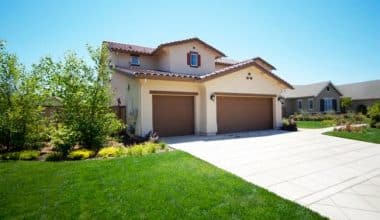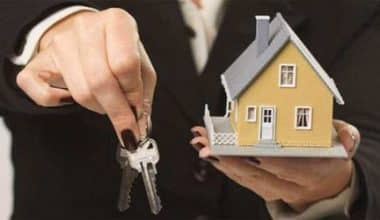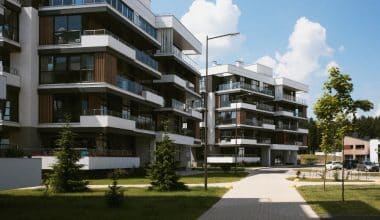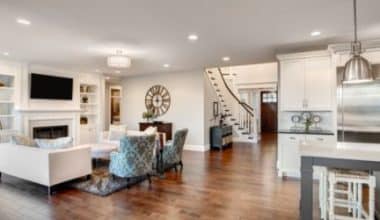Investors in real estate should always have an end goal in mind and keep an eye out for opportunities. To that end, knowing a property’s after-repair value (ARV) is critical to maximizing a deal’s potential. Ultimately, it is the ARV of the property that determines whether or not a deal is worthwhile. If the ARV supports the purchase price and all foreseeable costs, investors may be one step closer to completing a deal. If you don’t know how to calculate ARV in real estate or wholesaling figures on your own, you’ll need a few hints to help you along the route.
Arv in Real Estate
The real estate term “ARV” stands for “after repair value,” or the estimated value of the property following all repairs and upgrades. Investment property owners need to know the difference between the value of a property that has been entirely renovated and one that has not been renovated at all since this number is important to their success.
It is possible to begin weighing the costs after you know the property’s worth. Trying to figure out potential offers without an ARV calculator is a fool’s errand.
The value of the property after repairs will determine how the investor will get out of the deal and what financing options are available. An ARV tells investors how much they can anticipate getting for a property when they sell it.
To evaluate a property’s ARV, reliable repair estimates and knowledge of the local market are essential. An experienced real estate investor can walk into a home and quickly determine its value based on the current market conditions. Those who are just starting out can’t do that, though.
What Is ARV In Real Estate?
In the context of real estate, the term “after repair value” refers to a property’s anticipated market value following particular repairs and improvements. Real estate flippers must utilize ARV to estimate property values and maximize profitability and ROI.
ARV in real estate will assist investors to determine how much money to invest in upgrades and whether the property is worth their money.
As an example, if a house is undervalued and comparable properties are selling for less, investors may use ARV to determine profitability.
How ARV Works in Real Estate
It is common in house flipping to use ARV, or after repair value, as a measure of return on investment. House flipping involves purchasing and quickly fixing up an existing property (often a “fixer-upper” or distressed property) before selling it.
An investor will look for a home with a lower buying price than its ARV and renovating costs to maximize profit.
Private or hard-money lenders who offer ARV loans to distressed property owners also utilize ARV as a major criterion. Lenders set an ARV loan’s maximum amount based on the property’s after-repair value, not its current worth or asking price.
Then an approved appraiser then uses the ARV to determine the final loan amount.
How to Calculate Arv in Real Estate
The basic ARV used to calculate the real estate equation is fairly simple:
ARV in real estate = property’s current value + value of renovations
Using this technique, you should be able to estimate a home’s value after renovations, assuming everything goes according to plan. Your ARV is $245k if your house is worth $190k and your renovations are $55k.
The simple method used to calculate real estate ignores a few elements necessary to estimate ARV accurately. When using ARV to make a purchase or repair offer or acquire funding, you should also accomplish the following:
#1. Evaluate The Comparables
Comparables, also known as “comps,” are recently sold properties that are identical to the ones you’re renovating or flipping. An MLS (multiple listing service) is the best place to find real estate comparables.
A real estate professional with access to an MLS and knowledge of comparable sales in your location may be able to help you determine ARV.
Use comparable properties in the same neighborhood, with similar square footage, design style, age, and condition as the one you plan to restore (in terms of upgrades)
Analyzing recent sales of similar properties in the neighborhood will help you estimate ARV by considering the average price paid for upgrades.
Most real estate experts use 3 to 5 comparable properties to determine the ARV of a property. Look at four similar homes that recently sold for $170,000 or less to estimate the value of your remodel.
#2. Appraise The Property
You should have your property appraised to get a more accurate idea of its ARV. You can get a better sense of how much your home is worth by determining its current market value.
There are various factors an appraiser may evaluate when looking at your home, including but not limited to:
- The overall health of the property
- How big is the property in terms of square feet?
- The total number of features includes places to stay, such as bedrooms and bathrooms.
- Attractiveness on the street
- Location
You can get an estimate of the home’s current value once the appraiser has inspected it thoroughly. If you know the current market value of your house, you’ll have a more accurate starting point for estimating your ARV in real estate.
After making renovations, you’ll need to get the house appraised. The actual value of your house may be more or lower than the ARV estimate.
To arrive at the correct marketing price for a house in today’s changing housing market, it is critical to conduct an appraisal after the remodeling is complete.
#3. Assess The Value Of Repairs
In addition to determining market value, an appraiser can also point out repairs that need to be undertaken and, if necessary, estimate the cost of those repairs.
After calculating and using the ARV, look for anything that might need mending in addition to the already planned repairs.
To calculate the cost and worth of repairs(ARV) in real estate, it’s crucial to be practical. Due to so many variables, it can be difficult to determine the ARV. As long as you take into account all repairs and comparable homes, you should be able to come up with an ARV estimate for your home.
How to Calculate Arv Wholesaling
When flipping houses, the ARV (after repair value) is one of the most critical things to know. Additionally, it is one of the most critical things to know when purchasing or selling rental or wholesale properties. “After Repaired Value” is the value of the home once it has been repaired.
You must know the ARV in real estate if you are dealing in real estate as a whole. In most cases, wholesalers buy a house and then sell it to another investor without any repairs.
You must calculate and know the ARV to determine how much another investor is willing to pay for the property because, in wholesaling houses, the ARV is a critical component.
Many wholesalers think they have good bargains but seek more than what a home flipper or landlord is willing to pay.
As a result, they don’t comprehend the ARV or how much an investor will pay depending on that value. One way to calculate the ARV wholesaling of how much a house flipper will pay is to use the 70 percent rule.
What Is the 70% Rule?
One way investors might estimate the length of time it will take for an investment to double is by using the rule of 70, which is also known as the doubling time formula.
Over some time, the rule offers investors an approximate approximation of exponential growth, but it works best if the yearly rate of growth remains the same. Using the rule of 70, divide the yearly rate of return by 70 to find how long an investment will take to double.
The method can be used in a variety of situations, including macroeconomics, such as population increase, inflation, and GDP growth. In fact, the formula tells how long it will take for an investment to double in value.
Double-digit growth rates are measured using rules 69 and 72, which follow the same method as rule 70 but divide the growth rate by 69 or 72 instead of 70.
These rules are more exact when computing investments with compound interest, or interest that is added or reinvested into the original principal amount.
How to Calculate the 70% Rule
Evaluating the rule of 70 is a simple, straightforward two-step process:
#1. Determine the annual rate of return.
First, figure out your investment’s yearly rate of return, which will function as the divisor for your rule of 70 equation.
Divide the formula by five, for instance, if your retirement portfolio saves money at a 5% annual rate. To convert a decimal growth rate to a percentage, multiply it by 100.
#2. Divide it by 70.
The “70” in the rule of 70 denotes the formula’s dividend or divisible part. To figure out how long it will take for your investment to double, divide your growth rate by 70.
Divide 70 by 5 if your mutual fund’s growth is 5%, for instance. Because 70 divided by three is 14, the doubling time is 14 years.
What Are the Limitations of the 70% Rule?
The rule of 70 has some drawbacks, the most significant of which is that the calculation only gives an approximation of how long it will take to double in size.
If the pace of growth remains constant, the rule is most effective. If growth rates or annual interest rates change in any way, an accurate estimate can’t be made.
How do Investors calculate and Use After-Repair Value?
- Calculating repair costs and expenses accurately
- Run and Examine Comparables
What are the Examples of Apps for Real Estate?
- Overall Best: Zillow
- Xome Auctions is the best for auctions.
- Redfin is the best place to buy a house.
- Trulia is the best site for determining home values.
- Realtor is the best choice for rentals.
- Apartments.com is the best option for renters.
- LoopNet.com is the best option for entrepreneurs.
How Do You Calculate Arv in Real Estate?
To calculate ARV in real estate = property’s current value + value of renovations
How Do You Calculate Arv Wholesaling?
One way to calculate the ARV wholesaling of how much a house flipper will pay is to use the 70 percent rule
How Do You Calculate the Maximum Allowable Offer?
Maximum Allowed Offer is calculated by taking the After Repair Value (ARV), subtracting fixed costs and rehab expenditures, then subtracting your expected profit (or equity)*. Hence, the Maximum Allowed Offer is the sum of these numbers.
Conclusion
Today’s most successful real estate investors rely heavily on the ARV formula. By using property values and market data, it is possible to determine if a deal is worth pursuing by using property values and market data. When used appropriately, you must calculate and know the ARV to determine how much another investor is willing to pay for the property because of wholesaling. Sometimes, it might even aid in the decision-making process when it comes to financing your new home or property. While ARV should not be used in isolation to assess a contract’s profit potential, including it in your deal analyzer is essential. Check it out on your next investment property utilizing ARV or the 70% guideline.
Related Articles
- WHOLESALING HOUSES: Definition, Pros, Cons & All You Need To Know
- Wholesaling Real Estate: How To Start Real Estate Wholesale (Beginners Guide)
- RULE OF 72:Meaning and Formula
- How To Start a Real Estate Business: Step-by-step Beginners Guide
- INVESTMENT MORTGAGE RATES: Best Investment Mortgage Rates






